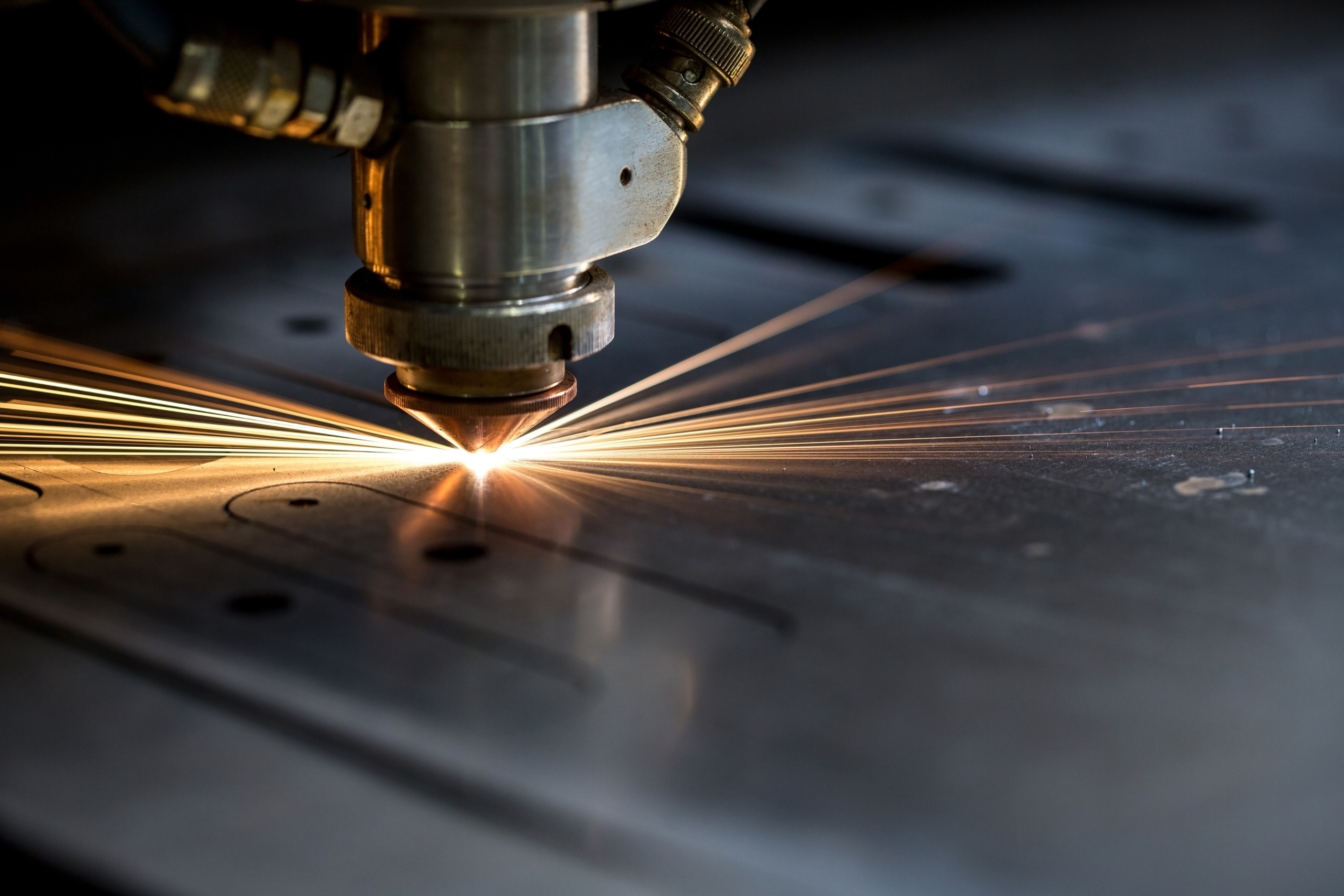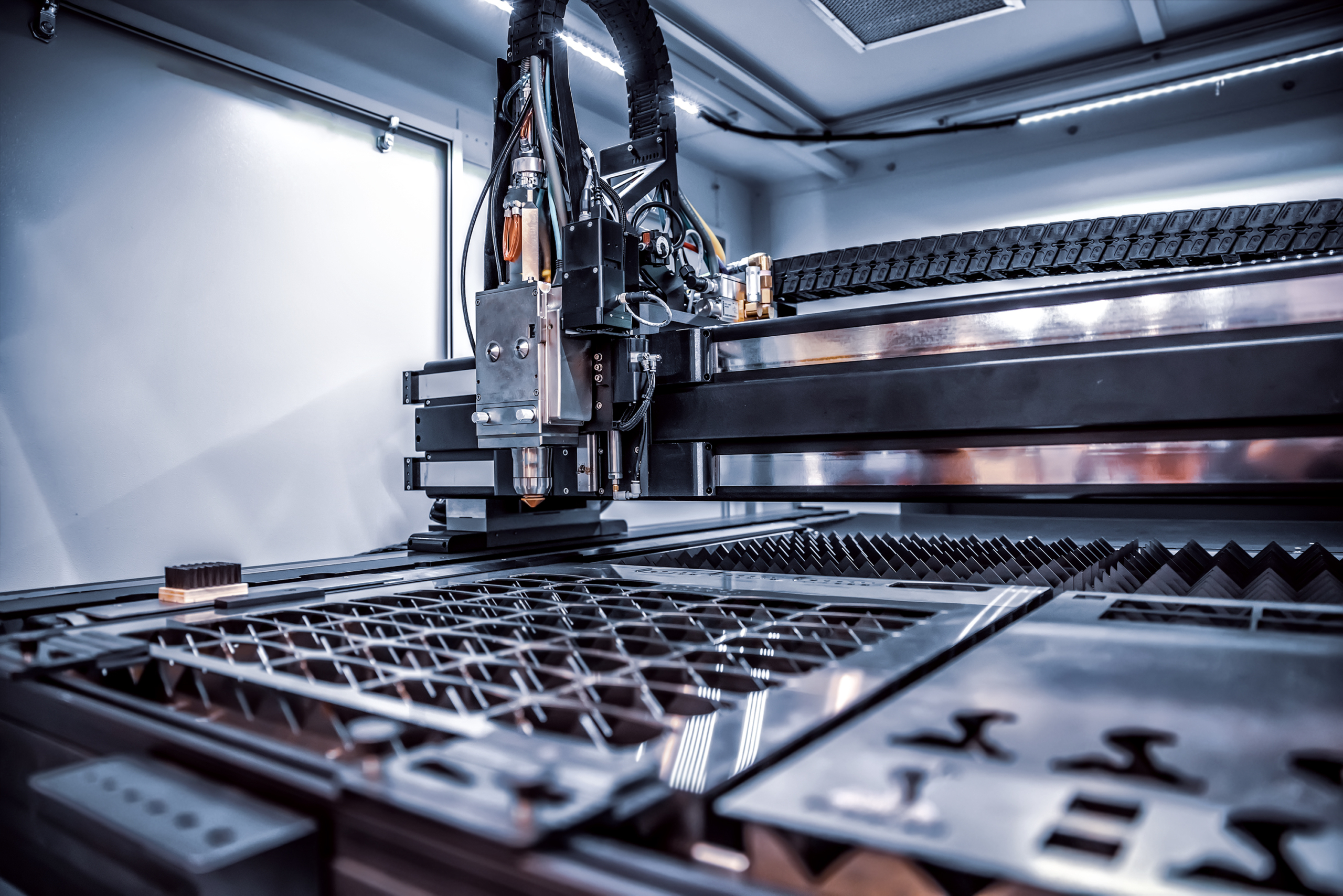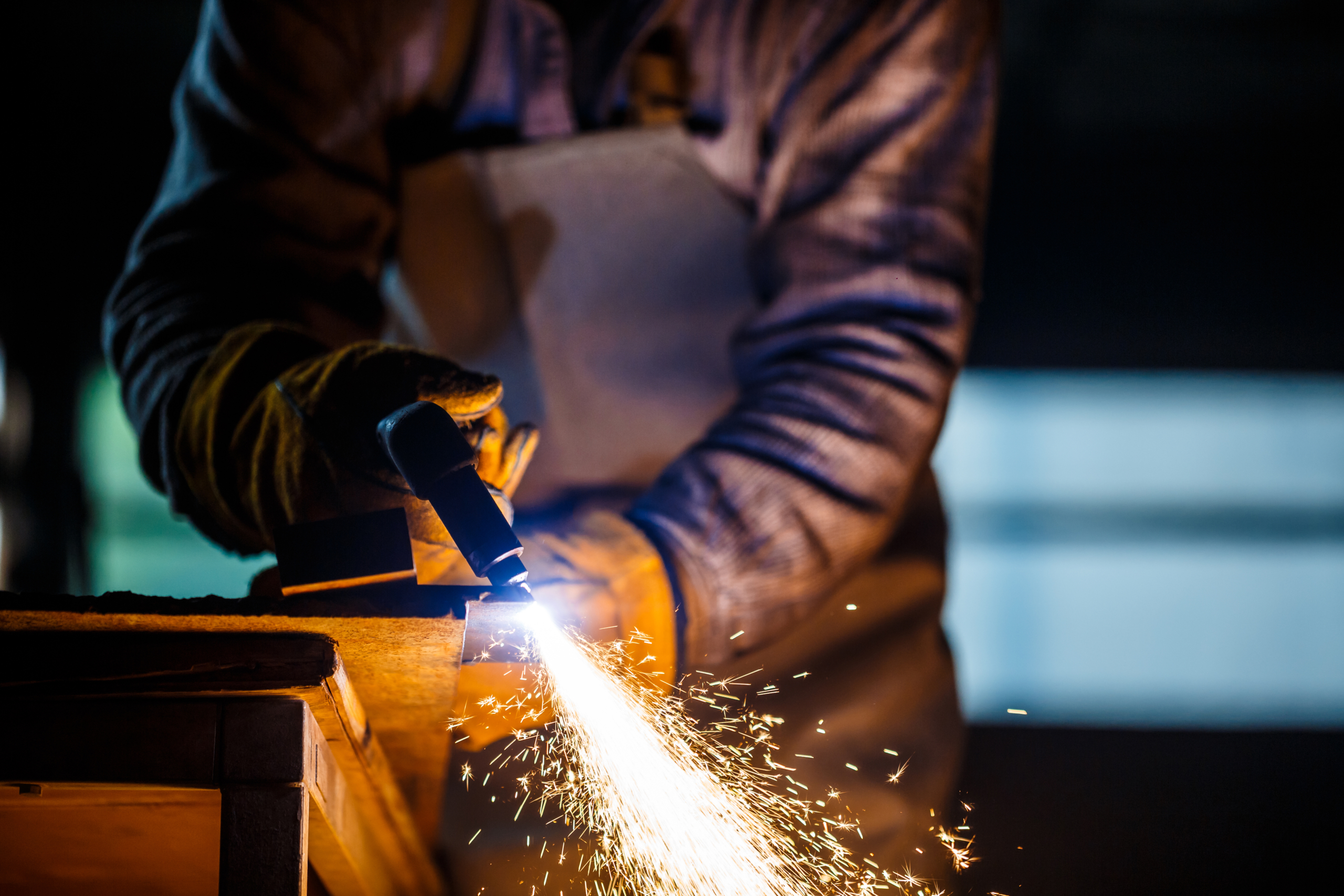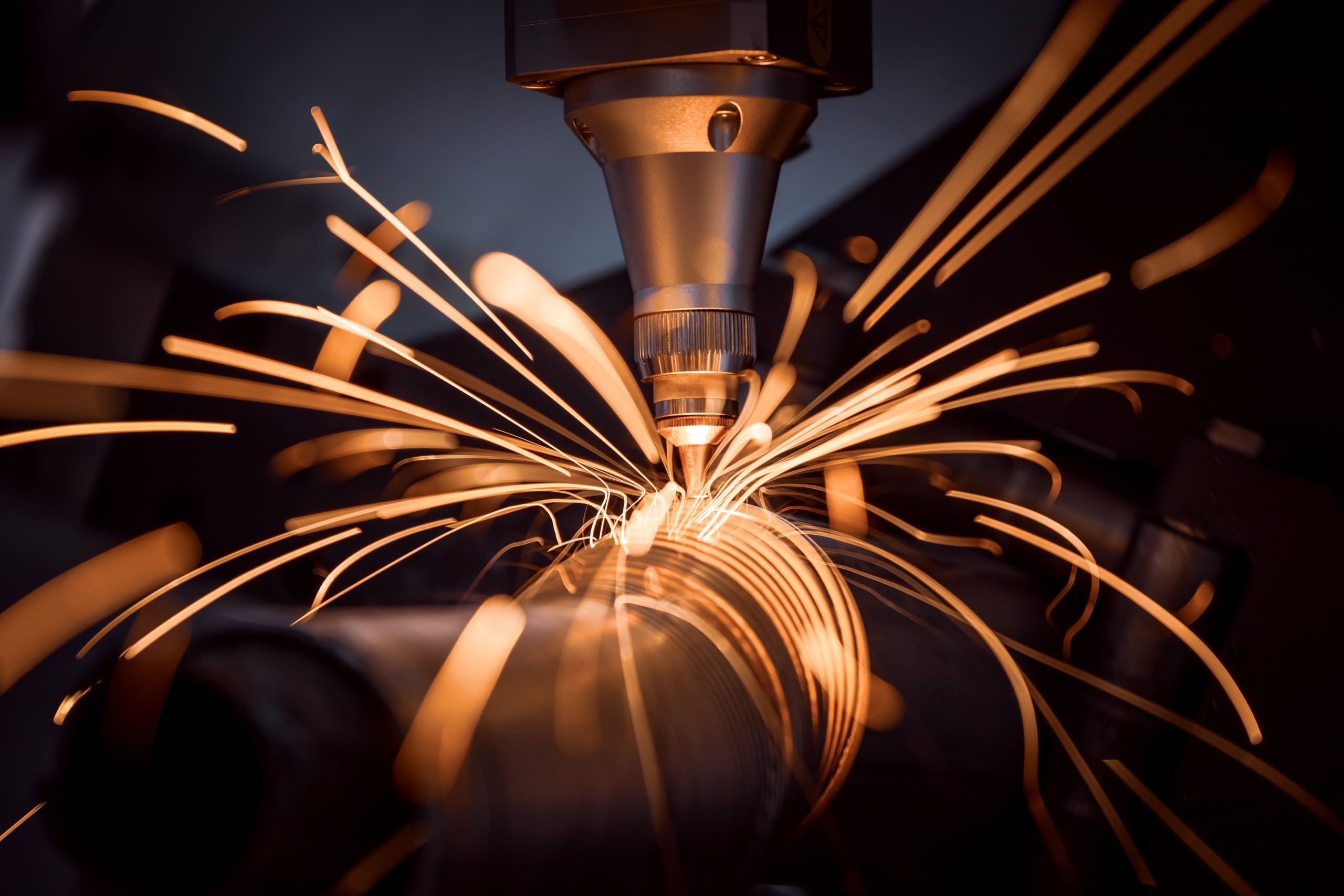Finish Architectural Knowledge Base
Metal Laser Cutting Vs Plasma Cutting

Metal laser cutting involves the use of a concentrated beam of high-energy light, typically from a carbon dioxide (CO2) laser or a fibre laser. This intense light rapidly heats and melts the metal, enabling precise cutting and engraving. Laser cutting is well-suited for cutting intricate shapes and can be applied to various materials, including metals, wood, plastic, and glass. Laser cutting offers high precision, with a typical tolerance of around 0.002 inches, and it often utilises CNC (Computer Numerical Control) technology for precise control.
Plasma cutting, on the other hand, employs a highly concentrated channel of electrically conductive gas to cut through thicker metal. It is more suitable for simple cuts and materials that conduct electricity, such as copper. Plasma cutting can be performed manually or with CNC machines, and it is characterised by its precise, quick, and repeatable cuts.
When deciding between these two methods, factors to consider include the type of material, cutting speed, starting method, and costs. Both methods are efficient and offer different advantages depending on the specific requirements of the project.
Comparing Metal Laser Cutting and Plasma Cutting
Metal laser cutting and plasma cutting are two popular methods used in the industry for cutting metal, each with their own unique features and advantages.
Laser cutting utilises a concentrated beam of optic light to rapidly heat and melt metal or other materials. This method offers more detail and is great for engraving and cutting small shapes. It can cut wood, plastic, glass, and other materials with a tolerance of .002 inches. Laser cutting uses CNC to control the machine and was first used in the 1960s for industrial purposes. It is valued for its precise edge and exact detail, low maintenance, and maximum efficiency.
In contrast, plasma cutting uses a highly concentrated channel of electrically conductive gas. It is better for simple cuts and cutting through thicker metal, and can only cut materials that conduct electricity. Plasma cutting is safer than using saws and can cut through thick metal. It offers precise, quick, and repeatable cuts and can be done by hand or with CNC machines. Plasma cutting was developed to cut metals that flame cutting couldn't handle and works by sending a fast jet of hot plasma through conductive metals.
When choosing a plasma cutter, it is important to consider the materials and cutting speed, as well as the starting method and costs of materials. Determining the right cutting method depends on your specific needs.

What is Laser Cutting?
Laser cutting is a highly precise and efficient manufacturing method that utilises a concentrated beam of coherent light. This beam rapidly heats and vaporizes or melts various materials, resulting in intricate engravings and precise cutting of various shapes and sizes.
This process is commonly used in industrial applications like manufacturing and aerospace, and offers extremely tight tolerances, often reaching as low as .002 inches. Laser cutting is controlled by computer numerical control (CNC) technology, allowing for precise edge and exact detail.
In addition to its precision, laser cutting is known for its versatility. It can be used with a wide range of materials, including metals, plastics, wood, and ceramics, and it can handle various material thicknesses. Laser cutting is also favoured for its relatively fast setup time, low maintenance requirements, maximum efficiency and the ease with which adjustments can be made to accommodate different designs.
With over 25,000 applications, laser cutting is not only efficient but also environmentally friendly. The process generates minimal waste, as the laser beam is focused precisely on the material being cut. Additionally, many modern laser cutting machines are designed to be energy-efficient. Laser cutting’s versatility and ability to provide intricate cuts make it a popular choice in various industries.

What is Plasma Cutting?
Plasma cutting is a metalworking technique developed before the widespread use of laser cutting. It employs a highly concentrated channel of electrically conductive gas to rapidly cut through various materials, especially those with significant thickness, providing precise and repeatable results.
Unlike laser cutting, which uses a focused beam of coherent light, plasma cutting relies on a high-velocity jet of superheated plasma to melt and sever conductive metals. This method is especially effective for cutting through thicker materials that might be challenging for traditional flame cutting. Additionally, plasma cutting is preferred for its ability to cut highly reflective metals like copper.
Plasma cutting can be performed manually or with CNC machines, and the choice between the two depends on factors such as cutting speed and the starting method. Careful consideration of the materials and the desired cutting method is crucial in determining the most suitable approach.

What's the difference between Metal Laser Cutting and Plasma Cutting?
When it comes to fabricating intricate designs and achieving precise cuts, understanding the key distinctions between metal laser cutting and plasma cutting is paramount.
Metal laser cutting utilises a concentrated beam of optic light to rapidly heat and melt metal or other materials, enabling detailed engraving and cutting of small shapes. It is known for its precise edge and exact detail, with a tolerance of .002 inches.
In contrast, plasma cutting uses a highly concentrated channel of electrically conductive gas to cut through thicker metal. It is better suited for simple cuts and materials that conduct electricity, such as copper. Plasma cutting offers precise, quick, and repeatable cuts and can be done by hand or with CNC machines.
Both methods have their advantages and considerations, and choosing the right cutting method depends on the specific needs of the project.
Factors to Consider when Choosing Between Laser Cutting and Plasma Cutting
Considerations for selecting between these two cutting methods include the desired intricacy of the design, the thickness and conductivity of the material, as well as the level of precision and speed required for the project.
Both laser and plasma cutting are suitable for a range of materials, but their effectiveness varies. While laser cutting is versatile and can handle a wide variety of materials, including metals, plastics, and ceramics, with precision, plasma cutting is primarily used for metals and is more effective when dealing with thicker materials.
Laser cutting excels when intricate, detailed designs are required. Its precision and accuracy make it ideal for projects with complex shapes or fine details. While capable of making intricate cuts, plasma might not match the precision of laser cutting.
Plasma cutting relies on the electrical conductivity of materials, so it's limited to metals that conduct electricity. Laser cutting, on the other hand, is not constrained by material conductivity and can cut a broader range of materials.
Laser cutting is generally faster and more efficient for intricate designs, providing a smoother finish. Plasma cutting is better suited for simpler cuts and thicker materials, where speed may take precedence over precision.
The choice between laser cutting and plasma cutting ultimately depends on the specific requirements of the project, such as the material type, design complexity, and desired level of precision and speed.
Looking For More Information?
Applications of Laser Cutting
One of the most versatile and widely used manufacturing techniques involves the precise and efficient removal of material using a highly concentrated beam of light. Laser cutting, as this technique is known, has revolutionised various industries due to its ability to cut through a wide variety of materials with exceptional precision and detail.
The applications of laser cutting are vast and diverse. It is commonly used in the automotive industry for cutting intricate parts and components, in the aerospace industry for precise cutting of metal sheets and panels, and in the jewellery industry for creating intricate designs on metals.
Additionally, laser cutting is utilised in the medical field for the fabrication of medical devices and implants, as well as in the electronics industry for cutting circuit boards with high accuracy.
The versatility and efficiency of laser cutting make it an indispensable tool in modern manufacturing processes.

Applications of Plasma Cutting
Plasma cutting, with its ability to swiftly and precisely remove material through the use of a concentrated channel of electrically conductive gas, finds application in various industries such as automotive, aerospace, and fabrication, allowing for the creation of intricate patterns and the cutting of thick, reflective, and electrically conductive materials.
In the automotive industry, plasma cutting is used for creating intricate designs on car bodies, cutting exhaust pipes, and fabricating parts.
In the aerospace industry, it is employed for cutting and shaping metal components for aircraft engines, wings, and fuselages.
In the fabrication industry, plasma cutting is utilised for cutting thick metal plates, creating precise and intricate designs on metal sheets, and fabricating metal structures.
Additionally, plasma cutting is also used in the construction industry for cutting metal beams and sheets, and in the shipbuilding industry for cutting and shaping metal hulls and structures.
Conclusion
Plasma cutting and metal laser cutting are two distinct methods with their own unique advantages and applications in various industries. Plasma cutting is highly effective for cutting through thicker metals and materials with high reflectivity, such as copper. Its ability to handle these materials makes it a preferred choice in specific situations. On the other hand, laser cutting is versatile and can be used on a wide range of materials and thicknesses. It is known for its speed, accuracy, and ability to provide intricate cuts.
Whether done by hand or with CNC machines, plasma cutting has proven to be a reliable method for cutting metals that laser cutting couldn't handle. When considering the materials to be cut and the desired cutting speed, selecting the appropriate plasma cutter becomes crucial. Additionally, factors such as the starting method and costs of materials need to be taken into account.
Ultimately, the choice between laser cutting and plasma cutting depends on the specific needs and requirements of the project at hand.
Looking For the Right Finish for Your Product?
Contact us today to ensure your finished product meets industry standards and quality expectations. Our expert team will provide you with guidance and technical assistance to optimise the appearance and quality of your product. Trust Finish Architectural for your peace of mind.
Need more information?
To see how Finish Architectural could support your next project - simply call us, or use the form below.